- Home
- About us
- Products
- Dealer Enquiry
- Contact Us
- 044 -2486 1994
- +91 99623 98222
- sales@nantech.in
- REQUEST A QUOTE
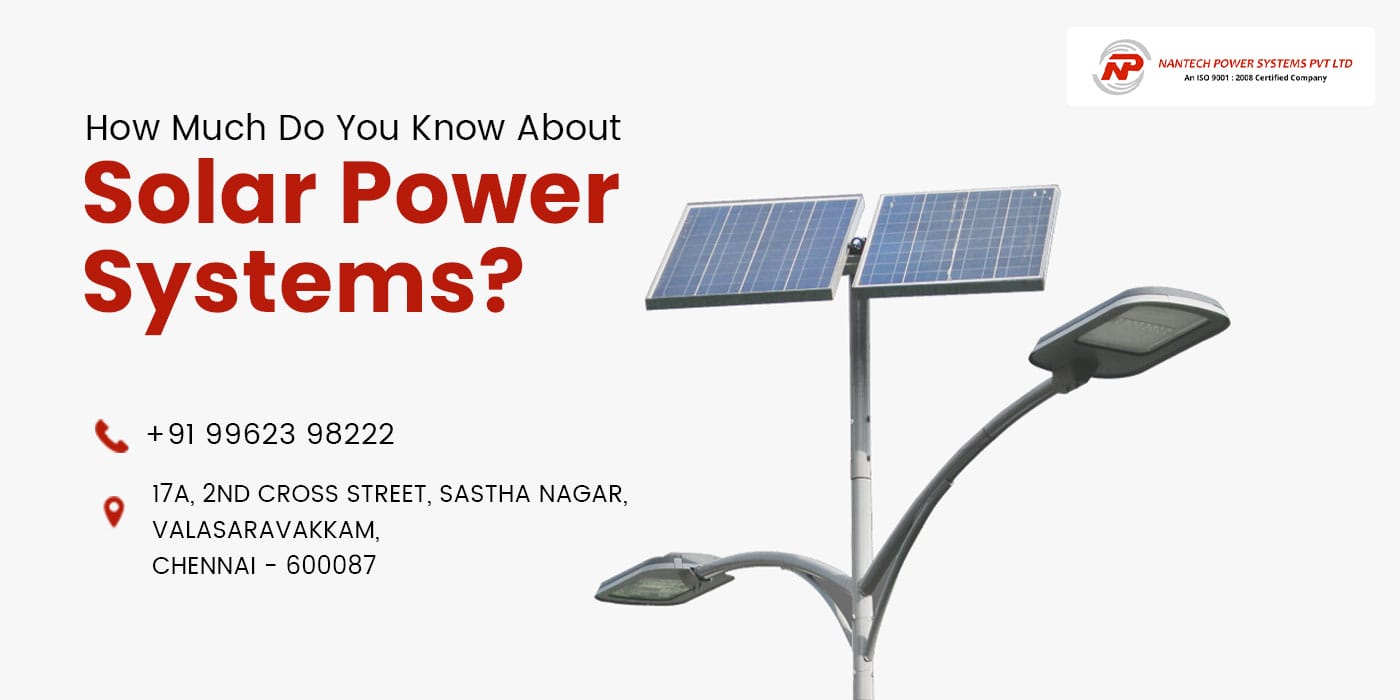
Installing a solar power system has become a fascination, a luxury and a necessity. Why waste the energy of the sun when you have it in abundance? When it comes to investing in solar power systems, the first and foremost thing is to understand everything about the solar power system- how it works, its components, its types, the various systems, etc.
This knowledge is crucial in making a choice between the Off-Grid and On-Grid solar power systems, which is quite often the big dilemma. So, what is the solar power system and how does it work?
Generated by the sun, solar power is sustainable, clean and usable energy. Irrespective of where they are used, all solar systems work on the same basic principles. The solar panel is the primary component of the solar power system. The solar panels convert direct sunlight into Direct Current using the Photovoltaic effect. The DC power is either stored in a battery or converted into AC power and used to run appliances. This is just the entire process in a nutshell!
There are four main components of the system that are common to all the types of solar panels available today:
Modern solar panels are made of PV cells or Photovoltaic cells, which are crucial to initiate the process of electricity generation. Solar panels or solar modules are connected in strings to form a “Solar Array”. To maximize the use of your solar panels, consider its orientation, tilt angles, and efficiency. Solar panels require uninhibited sunlight to fall directly on the panel. Panels require daily maintenance, and proper installation to work without a hitch.
The solar inverter plays a critical role in converting the Direct Current to grid-compatible Alternating Current which is what you use in your homes and commercial establishments. From a reliability perspective, the inverters are vulnerable, because they are the weak link in this system. Hence is it vital to choose a good quality inverter.
There are two kinds of batteries used for solar energy storage:
The electric switchboard is a handy component that collects the AC energy from the inverter and disperses it through various circuits to power your home appliances. Any excess electricity is sent back to the grid through an energy meter or stored in a battery for later use. This is commonly known as Net Metering.
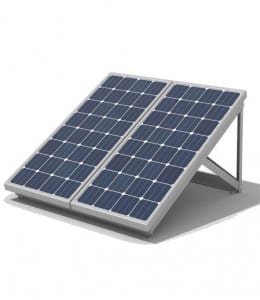 But that’s not all! Apart from the above-mentioned components, there are so many more basic parts that combine to make the entire solar power system. They are:
But that’s not all! Apart from the above-mentioned components, there are so many more basic parts that combine to make the entire solar power system. They are:
Also Read: Are We An Electricity-Surplus Nation?
Ever since its invention, the solar power system has evolved into three types:
To arrive at a proper conclusion to the dilemma of choosing between the three types, you actually have to gain a clear understanding of what they actually mean.
The On-Grid System
When your solar power system is connected to the common utility power grid, it is an On-Grid system. Most solar power systems in India are on-grid systems, mainly because they are easy to install and very economical. Solar systems that power residences are often connected to the common utility grid. Any excess electricity that your on-grid system produces can be sent to the grid, allowing you to build enough credit that you can cash out at the end of the year or month. This is an effective process called Net Metering which is very conducive for solar power owners who are looking to generate ROI.
The Off-Grid System
An Off-Grid system empowers you to be 100% self-sustained because yours is a stand-alone system that is not connected to any grid. This system allows you to store excess electricity that will come in handy at critical times. However, there is a downside to the off-grid system. It calls for heavy investment because of the complex installation that uses expensive, bulky batteries. The expenses itself can be a hurdle to gaining the actual amount of electricity you require.
The Hybrid System
The hybrid system is a clever combination of the off-grid and on-grid systems that offer an easy “plug and play” solution. With the use of special hybrid inverters, the excess energy is stored for later use. The hybrid system is quite similar to your UPS system since it serves the same purpose of providing stored energy in case of a blackout.
Take a look at just a few of the stark differences of the off-grid and on-grid solar systems:
You are completely safe with the on-grid system because you can be assured of a consistent power supply. But the off-grid system is not so promising. With limited battery backup, the off-grid system relies entirely on the power of the sun to generate electricity. You wouldn’t want to encounter such a dilemma on a rainy day, would you?
The on-grid system not only allows you to draw stored energy from the grid when you need it but also generates an income with Net Metering where you are credited for the amount of electricity your system generates. With off-grid systems, you do not have the advantage of net metering and you need to invest in plenty of batteries to store the excess energy.
Power supply during an outage
This is where the off-grid system has the upper hand because it is completely independent. The on-grid system will work during a power outage only if it has a battery backup.
Yes, there will be a few changes in your electricity bill even if you own an On-grid system. The off-grid system is not tied to a grid, so there are no bills. However, the cost of installation can go through the roof because of the equipment.
What’s the verdict?
In India, the implementation of Net Metering and open access has boosted the adoption of On-grid solar power systems. However, the Off-grid system is a better choice for usage in remote areas where the utility grid is unavailable or inaccessible.
Nantech Power Systems Pvt Ltd, the leading inverter dealers in Chennai, give you expert guidance in choosing the right solar power system for your home or commercial building. Our reliable solar power systems are exceptional in quality and backed by warranty. Waste no time! Call us today @ +91 99623 98222 to harness the power of the sun!
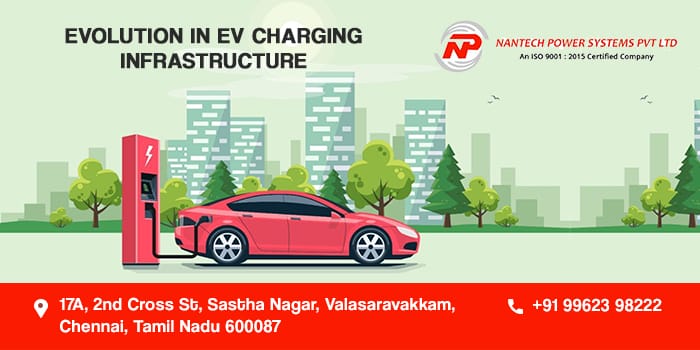
Reducing carbon emissions is going to be one of the major focuses of the government. To strengthen the effort, the Government of India has taken initiatives to increase the possibility of E-Mobility. Companies are now focusing on developing electric vehicles and the development of charging stations plays a major role in the widespread growth of EVs. As per a study, India will have around 8 million public charging facilities and 79 million electric vehicles plying on the roads by 2030. As the leading EV charging solutions in Chennai, Nantech Power Systems commits to producing sustainable and reliable premium, public, commercial, and residential comprehensive EV charging stations.
Also Read: The EV Revolution: Is Chennai Ready For It?
The transport sector accounts for 40% of total fuel consumption and in this, 90% is used for road transport. The state and central governments are now adopting slow regulations and policies to promote the use of EVs. Lack of public charging facilities is a major hurdle the EV industry faces while convincing prospective buyers. Most of the charging takes place either at work or at home. Electric vehicle charging infrastructure or EVCI needs to be increased as getting stranded with empty batteries. Successful transition to e-mobility requires affordable, accessible, and reliable EVCI.
The government has followed international standards in developing an Indian specific standard called Bharat Charging. For the successful adoption of E-Mobility, the government has been adopting new regulations, incentives, and taxation policies. They must also take care of consumer education measures. Such initiatives are required to boost consumer confidence and increase partnership in developing electric vehicle charging infrastructure. Developing charging stations is a major challenge which the government will be taking initiative along with major players in the field.
There are different types of charging infrastructure which is renewable charging hubs, charging stations in communities and charging stations in office sites. Developing such a charging infrastructure is indispensable to eliminate barriers in adopting EVs. EV solution providers can set up charging infrastructure on a company's campus for its employees or they can tie up with real estate developers to set up charging stations within their properties. The Government of India has drafted a plan to set up 2636 EV charging stations in 62 cities, including Chennai, across all states and union territories by 2023. The decision has inspired many private and state-owned power utilities industries to enter the business of improving charging infrastructure.
Agreements are being signed with battery manufacturing companies and swapping companies to initiate infrastructure development. There is a need to maintain a balance between demand and supply and innovative and meaningful collaboration with key stakeholders will help in a long way. A demand aggregation model is devised to create a boom in the market to increase mobility services and charging infrastructure. The different demand aggregation models are led by the private sector, discom, and public sector. Battery swapping will bring down the initial cost of EV to half its price.
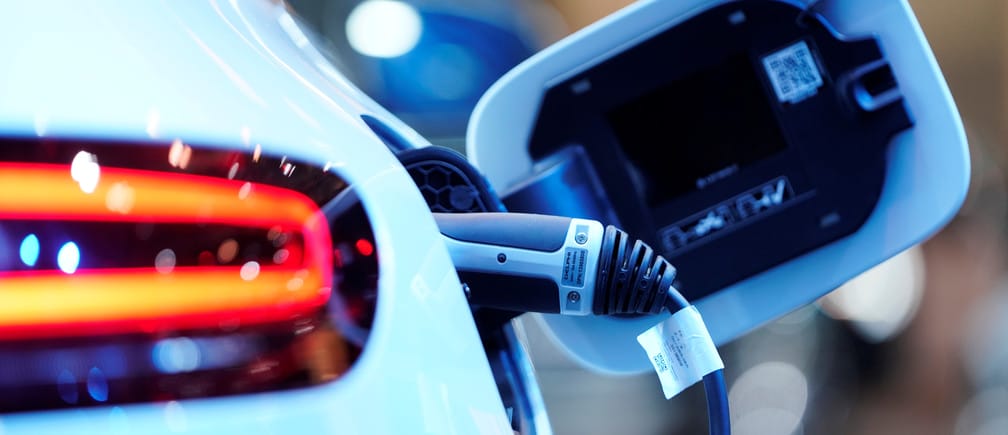
Initiatives are undertaken to have solutions to enable battery swapping affordable and done in less time. For four-wheelers, fast DC charging is the best option available. Four-wheel electric vehicles are not designed for implementing battery swapping. Indian automakers need to develop electric four-wheelers that are compliant with battery swapping. Post-COVID era will see a shift from public transportation to 2 wheelers and 3 wheelers and the battery swapping segment will find a good market as they enable electric two and three-wheelers. India has developed two standards for AC and DC charging, namely, Bharat EV Charger DC-001 and Bharat EV Charger AC-001.
The standards have recommendations and specifications for charging electric vehicles. It is expected that AC vehicles will continue for around 5 to 8 years as we kick start the electric vehicle industry. The electric two and three-wheelers manufactured in India have AC charging. Some electric cars also have AC charging fitted. In a cost-driven economy like India AC chargers are a huge advantage as they are much cheaper and manageable when compared to DC charging. DC charging is expected to gain momentum in the second half of the decade. DC chargers will be able to service multiple vehicles and will be a cost-effective option even if one unit sells at a higher price. With new technology, the price of DC is dropping and will soon outweigh the advantages of AC technology.
As technology evolves in the power sector, the government is expected to promote the use of renewable sources of energy in charging electric vehicles. The future of E‐Mobility depends on combining renewable sources with charging and battery storage. Setting up a solar power plant for DC fast charger of 25kw to 100kw batteries at public charging stations will be a huge challenge as it will involve huge amounts of expenditure. A solar plant requires huge space and it could be a challenge for setting charging stations in the city. The Faster Adoption and Manufacturing of Electric Vehicles in India or FAME 2 will also focus extensively on electric vehicle charging infrastructure.
E-mobility services will initially take off in rental services or ride-hailing services in the Indian cities, especially Chennai. With the current circumstances, this will help Indian cities to skip combustion-powered private vehicle ownership. This will help educate people on EVs and also create awareness amongst the general public. The electric vehicle industry should be able to convince people that their product is as reliable as combustion-powered vehicles.
People need to be convinced that they won’t be left stranded without battery power in the middle of nowhere. A real-time, transparent solution needs to be developed to allay fears of the consumers. There should be a platform where car owners can check the status of the battery, record data and view the nearest EV charging station. The government should also take effort to reduce GST on charging components and swapping services the same way as they did on electric vehicles. It will reduce cost and benefit consumers.
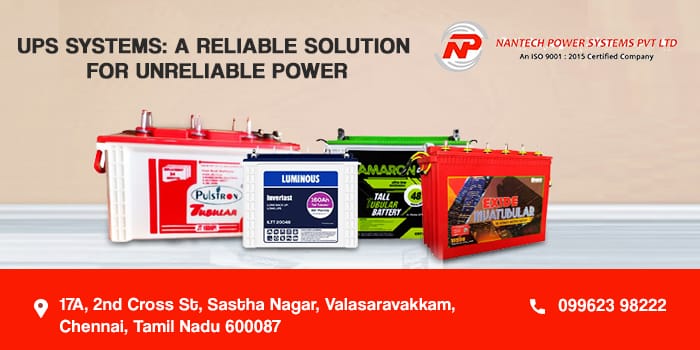
Power is anything but predictable. There is no saying when the slightest lightning can trigger a blackout, or the tiniest flaw can cause a surge that can knock out your expensive devices. Low voltages can leave you in desperation when you require that cool air from your air conditioner.
The unpredictability of power can also cause loss of property and money. What's worse is that power surges can even be life-threatening. This is where the indispensability of an Uninterrupted Power Supply comes into play. The UPS system not only provides undisrupted power but also shields your electronic appliances from a sudden power surge.
The UPS system is an omnipresent necessity in homes, businesses and commercial establishments. It plays an imminent role in protecting computer systems, telecommunication networks, machinery and delicate equipment that cannot handle the unpredictability of power. In a nutshell, the UPS keeps the work process flowing without a hitch.
Also Read: THE 101 ON SERVO STABILIZER
If you were under the impression that power surges and voltage fluctuations were the only problems that required a UPS system, you are not quite right. UPS dealers in Chennai list out various complications that the UPS can efficiently handle, making it an undeniable necessity in your homes and offices.
Types Of UPS: A detailed insight
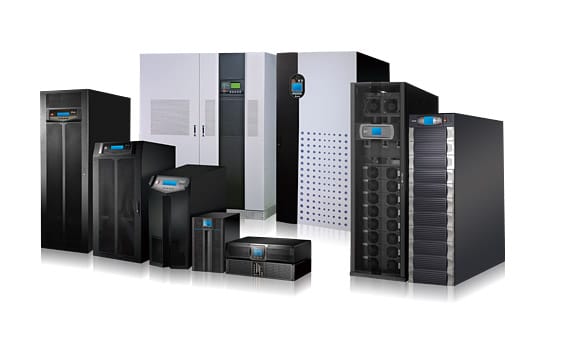
Three major types of UPS are commonly used for domestic and commercial purposes. We give you a detailed explanation of what they are and how they work.
1. Online double conversion
Also known as double conversion UPS, it is the most common UPS type that is used to power large data centres. Online double conversion UPS are highly reliable for the quality power that they supply. This support and protection are vital to handle critical loads and voltage fluctuations that can destroy a whole system of computers.
Application: large scale industries, small enterprises, LAN centres, IT parks.
2. Line-interactive UPS
A line-interactive UPS is very efficient in automatically regulating the voltage fluctuations. Widely used in applications where outages are rare but fluctuations are common, this UPS system supports a wide range of input voltage variations before switching to battery backup.
How it works: The line-interactive UPS continuously feeds power through a conditioner that keeps the battery charged at all times. It preserves battery life by using it as a last resort. Hence, the inverter becomes a part of the output and is always on "switched on" mode.
Applications: Personal computers and small range of electronic equipment.
3. Offline UPS
Also known as a battery backup or stand-by UPS, it is the most budget-friendly option. Engineered to power very basic loads and single workstations, the offline UPS is a viable option for small homes and businesses.
Applications: lights, fans, gaming consoles, domestic appliances.
Standard Features Of A UPS
How well do you know your UPS? Take a note of the standard features that every UPS is designed with:
The requirement and usage of the UPS define the kind of system you will need to choose. What is the intention of use? Do you need it for your home, office or business workplace?
These are the basic queries that will determine the size and running time of your UPS, depending on the devices you want it to power.
The line-interactive UPS is always a tad better than other types because it is built to switch from battery to utility power quickly. An online UPS is the best choice for bigger offices and homes as it can provide uninterrupted, clean energy.
Long backup runtime and the seamless switchover to battery mode are two essential factors that determine the worth of a UPs system. Your UPS should fulfil these criteria if they are to be used for powering sensitive devices
Your UPS dealer should provide you with post-delivery service and maintenance, should any issue arise. Additionally, ensure that the UPS is shock-proof and has user-friendly graphical displays to indicate its working status. Another critical point is to check if the UPS has ample power outlets to connect to the devices of your requirement.
Nantech - The Finest UPS Dealers In Chennai
An unexpected power disruption and the subsequent loss of expensive equipment is the last thing anyone wants to encounter. Where you buy your UPS also matters as much as deciding what model to buy. Being the fundamental part of an organization's efficient workflow, you must source your UPS from the best dealer in the city of Chennai.
Nantech Power Systems is your top choice to procure the UPS system of your choice. We supply top UPS brands with exceptional quality. Nantech also offers the best team of experts for installation and post-installation services. For the safety and security of your electrical equipment, always team with Nantech and get the best UPS systems. Get in touch with us @ sales@nantech.in

Typically, an industrial load is a three-phase load, and in a real setting, the voltage of the three phases is never balanced. A servo stabilizer is a closed-loop, motor-controlled stabilisation system that maintains a balance between the three phases.
They are called servo stabilizers because they use a servo motor for voltage correction. In some places, they are also known as Servo Controlled Voltage Stabilizer.
A Servo Stabilizer in Chennai has become mandatory for industries, commercial units and offices because they protect all electronics and machines from voltage fluctuations.
What are the advantages of servo stabilizers?
When compared to traditional stabilizers, servo stabilizers offer plenty of advantages in Chennai:
Because they use a servo motor, the output voltage is very accurate. Where input voltage differs up to 50% less or more, the output is + or – 1%! They are capable of supporting almost 5000KVA.
It is these outstanding benefits that make servo stabilizers popular for low-high rating appliances in Chennai and beyond!
Also Read: Busting The Myths Around Inverter Battery!

Servo stabilizers have three-phase and single-phase systems. They come in both air-cooled and oil-cooled units.
Both units work on the same principle. They will stabilize voltage and regulate output. For instance, if the stabilizer for an AC receives a low voltage, the buck-boost transform will increase it to the level necessary. Or if the power supply to the AC servo stabilizer is too high, the buck/boost transform will stabilize to the needed voltage.
Both oil and air units may work similarly, but the method through which they show efficiency differs in the two.
These show perfect stable output even when the voltage conditions are severely unbalanced. This is possible because they have an extremely durable motor-controlled stabilization system.
They are called oil-cooled because two things happen – lubrication and cooling. When an application gets heated, oil in the pathways ensures effective cooling of the system.
Air-cooled units are more expensive because of their design. They have a liner in aluminium alloy fins and fans for cooling above 50kVA. One benefit of these units is that they increase the durability of the machine or electric appliance. Moreover, they save you maintenance costs.
Here are some more differences between oil and air-cooled servo stabilizers:
| Servo Stabilizer: Oil cooled | Servo Stabilizer: Air-cooled |
|---|---|
| Cooling by the oil of coiling | Cooling by air of coiling |
| Capillary for oil rotation | Louvers in air-cooled |
| Heavy load in summer | Low load, heats up in summer |
| 30 kVA | 75 kVA |
| Weight 1.5% | Weight 1% |
| 0.8 power factor | 0.9 power factor |
Based on these differences, you can effectively select the right type of servo stabilizer you will need.
<h3">Where Can Oil and Air-Cooled Servo Stabilizers Be Used?
Uses of air-cooled servo stabilizers:
These can be applied in plenty of places, from individual houses to massive manufacturing plants. Air-cooled servo stabilizers are constructed with tailored sizes and capacities dependent on where they are needed:
Uses of oil-cooled servo stabilizers:
These are generally utilised for applications that need over 45kVA power. Air-cooled units are applied where the power required is less than 45kVA. There is an exception to this rule.
For industries that have very high dust like foundry dust or cotton dust and plants that have flammable particles, oil-cooled units are the best even if the requirement is for lower capacities.
This is essential because they prevent fire accidents and help with trouble-free performances.
Applications of Servo Stabilizers
Servo stabilizers can be used for house appliances like:
Commercial Areas
Hotels, malls, theatres, restaurants and more can utilise servo stabilizers for:
The best option for commercial places is usually an air-cooled servo stabilizer to prevent issues that come with voltage fluctuation in Chennai.
Servo stabilizers can be applied for a wide range of industries in Chennai to attain voltage efficiency:
If you are looking for reliable, competent, safe and most of all, advanced Servo Stabilizer in Chennai, then the best choice is Nantech. Get in touch to find the perfect unit for your requirements!
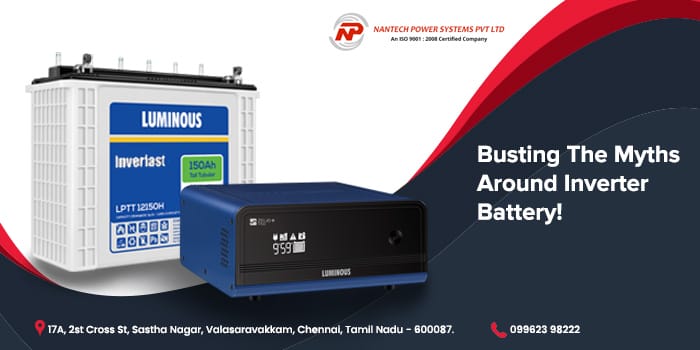
At Nantech, the one question we get asked and asked often by our customers in Chennai is if an inverter battery can power the entire home. To put the question to rest once and for all, we use this blog to bust the number one myth around inverter backup systems.
No, an inverter battery can not provide backup for the entire home, especially in the 21st century where houses are chock full of gadgets that need electricity to run. So, if you are buying an inverter battery in Chennai with the hope that it will provide power come hell or high water, read this blog to gain a better understanding.
Before we dive into why an inverter battery is not capable of powering the whole home, let’s look at what started the myth. There are some homes that can be powered by a battery system. These homes are few and far between because they are small and do not use power-hungry devices like swimming pools and air conditioners. As they place only a few demands on the battery, they can run on a battery backup for quite some time.
Also Read: The EV Revolution: Is Chennai Ready For It?
It is these small houses that have given birth to the myth that batteries can run an entire home. The reality is far from it. Typically, an inverter works best when it is used by the bear minimum appliances, and the battery capacity is rationed.
Why can’t inverter batteries power a whole house? There are two reasons why a home cannot be powered by a battery alone. One, an inverter battery is not powerful enough to give the kick start needed by large appliances to operate. Two, the lithium-ion batteries in an inverter do not have the energy capacity to supply electricity to a whole house for long, extended hours.
These two engineering limits make it impossible for an inverter to supply uninterrupted power to a modern house. The first thing that pops to the mind after reading the last paragraph is “why not invest in multiple batteries to solve the limitations on the power supply?”
The answer is simple: the cost of buying and installing several 20+ or 40+ kilowatt battery inverters is too high for the average homeowner. Because it is financially prohibitive, few opt for the solution. What most people do is take a more practical approach, which is to connect only critical loads to the inverter.
This means electric stoves, air conditioning, washing machines or dishwashers are not connected to the battery. Simple, small, and essential circuits like fans, lights and a convenience outlet are linked to the backup power supply. This ensures the continuous electricity is supplied until the main power comes back online.
Let’s say you still choose to connect your entire Chennai home to the inverter battery. In that case, how long will it be able to power all the appliances? The answer is not for a long time.
Here are a few figures to explain why:
High-power appliances like a central air conditioner, pool pump or electric stove consume boatloads of electricity. To be exact, it is 5000 watts, 2200 watts and 10,000 watts respectively.
Now let’s say you experienced a power cut in the evening, and your battery is down to 2.5-kilowatt capacity. It means the inverter only has enough juice to run the AC unit for half an hour, the pump for one hour and the stove for barely 15 minutes.
In short, high-power gadgets make it impossible for a battery to provide backup to the whole house for long hours. If you leave any one of these devices running, the battery will run out of power soon enough. In plain words, your home in Chennai will have no lights, and no fan, leaving you without a single luxury!
Yes, of course. People have been using inverter batteries in Chennai as power backups for a long time for a reason. The fundamental solution is to switch off all appliances that consume a lot of power when there is an electricity cut. It makes sure that no extra load is put on the battery and the house has continued power supply even for an entire night.
The problem with this solution is that if the cut occurs at night when no one is awake to shut off any extra appliances. The workaround to this is not to connect such devices to the backup in the first place. Since they are not linked to the inverter’s supply, then need not be switched off during a cut.
One more solution is to use battery backups coupled with solar panels. A well designed solar and inverter system can power your house for a long time. The keyword is well designed:
The Future Of Power Backups
In the coming time, smart homes will be able to address most problems that come hand in hand with inverters. Instead of relying on a human to shed any unnecessary load from the battery, the smart home will automatically be able to do so. One example is a smart electric panel that automatically manages the circuits in those and breaks those of large appliances in the event of a blackout.
Till the time such smart technology becomes commonplace in Chennai and takes care of the limitations of backups, the best and the most economical way to power your house is an inverter battery!
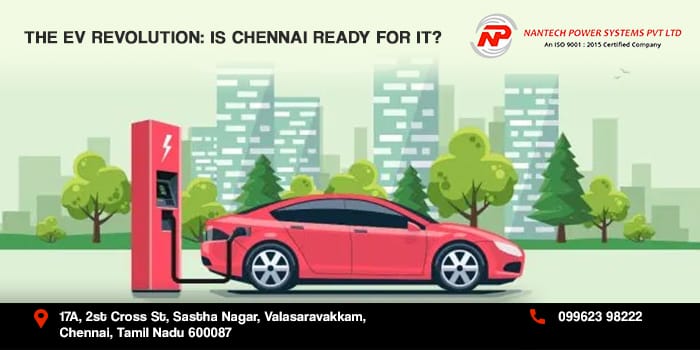
It is an interesting fact that 87% of Indians are ready to make the transition from fuel-powered vehicles to electric vehicles. The reasons can be varying. It can be a conscious eco-friendly decision, or the comparative affordability of the EV as opposed to spending or fuel, or just a simple desire to own an EV!
Whatever said and done, is Chennai geared up to meet the EV revolution? As much as there is the drive to own an EV, the accessibility to a charging station is still a huge barrier.
As per the policy norms of the state government, one charging station is to be set up every 25kms on either side of the national and state highways. The government is also actively encouraging private charging service providers to opt for renewable power sources to supply this growing need.
What is it that has to be done to make Chennai ready to face the consumer requirements for EVs? Let’s take a small detour and focus on the international EV market.
The electric vehicle revolution has spread far and wide in the countries of the USA and China. The entire European continent has embraced electric adoption. In spite of its wide acceptance, the EV did not have a red carpet welcome as you would’ve imagined.
It was heavily criticized for three aspects: charging, speed, and range. Companies worked day and night to resolve these issues with remarkable improvement in battery and automobile technology. Innovative firms gave them the much-needed support to push the EV market to where it is now.
What really gave the EV market a new lease of life were these factors:
Government policies
Charging infrastructure
Creating consumer awareness
Development in battery technology
Expansion of production capacity
Today, China heads the list as the world’s largest electric car market, followed by Europe and the USA. Norway leads as the biggest shareholder in the EV market.
Also Read: What Are The Business Opportunities That Come Hand In Hand With EV's?
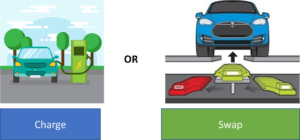 Now, the big question is this: What can we implement from the international arena to amplify and broaden the EV market in a metropolitan like Chennai?
Now, the big question is this: What can we implement from the international arena to amplify and broaden the EV market in a metropolitan like Chennai?
The first step to getting this show on the road is to have ample numbers of charging infrastructure.
Chennai has only a handful of community charging points. And that is not enough for a city of this size, population, and popularity.
How can we widen this network to make EV charging points accessible to all?
Targeting public places:
Chennai is chockablock full of restaurants, malls, cafes, coffee shops, supermarkets, cineplexes, gyms, and entertainment zones. Not to forget the endless list of colleges and educational institutions, coaching centers, and hostels.
These are prime spots to set up charging points and encourage the public to go electric.
Fuel stations:
Fuel stations are ideal points to charge EVs, just like fuel-powered vehicles. Cars can be left to charge while the owner uses the time to deal with other businesses.
Role of Nantech in Chennai’s EV market:
Nantech Power Systems Pvt.Ltd is the best EV charging solution in Chennai. With all your EV charging needs under one roof, Nantech provides you with home and office charging, midsize charging for pit stops and restaurants and full size charging for heavy vehicles.
The EV ecosystem is very much in its initial stages in India. Its growth will be dictated, affected, and controlled by numerous factors. And the reason that our country is vastly different from China and the USA in terms of urbanization, road infrastructure, electricity supply, and just the very mindset of the masses can have incredible effects.
Key Aspects
Embracing electric mobility:
EV charging companies are looking at various aspects to drive electric mobility:
Changes to encourage the growing EV ecosystem:
A big reason why Norway is a global leader in the EV share market is because of the country’s EV incentives and government policies. In Norway, EVs are exempted from road taxes, purchase taxes, and Value Added Taxes.
There are even dedicated lanes for EVs, free electricity, and free charging points across the country. Now, that is the kind of atmosphere that is conducive to the growth of the EV ecosystem.
What we in India require are:

If you are travelling in your EV from any part of the country to the city, always keep in mind that Nantech Power Systems Pvt Ltd is the best EV charging solution in Chennai. Your one-stop destination with all the facilities for EV charging under one roof!! Visit our website https://www.nantech.in/ to get more information!
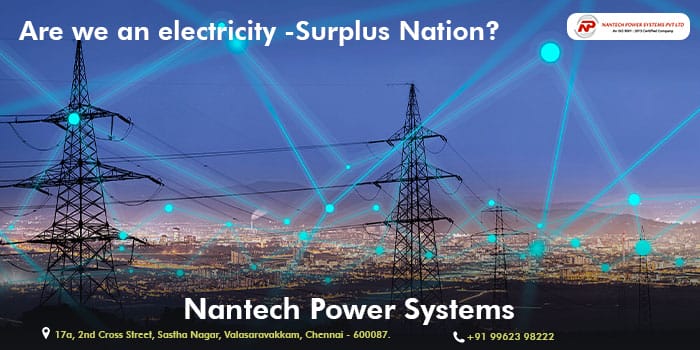
As per the facts on Wikipedia, India is the third-largest consumer of electricity in the world. Not only that, but we are also the third-largest producer of electricity. As of March 2020, the national electric grid has an installed capacity of 370.106 GW.
The number sounds impressive, but how does that translate in terms of India being an electricity-surplus nation? For the simple consumer, that question will translate as “How often will I have to endure power cuts?”
The reality is that India is always facing a deficit of electricity. In spite of the numerous government policies, electricity production is unable to meet its target. Besides that, there are a plethora of woes that are plaguing the electricity sector in India according to https://en.wikipedia.org/wiki/Electricity_sector_in_India#Problems_with_India's_power_sector
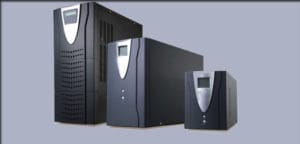
The unequal distribution of power between all electricity consumers is one of the reasons for the erratic power supply. This is one of the main factors that drive the demand for other temporary sources of electricity like the UPS, inverter, and diesel generators.
Wikipedia facts state that there are over 10 million households across India that rely on the ever-reliable UPS as back-ups in case of load sheddings and monthly power shutdowns. UPS imports run to the tune of nearly $2 billion per year.
It takes no rocket scientist to conclude that the mounting demand for electricity and the yawning gap in supply and distribution are the driving factors of the UPS and Inverter industries. What else are the factors besides this?
Pollution is also seen as an influencing factor that drives the demand for UPS and inverters. In New Delhi, diesel generators have been banned due to the sharp rise in pollution levels. As the only alternative source, the UPS has turned out to be the savior in many households and businesses across the capital.
The UPS and inverter market in India has witnessed exponential growth and there is nothing that will hinder it in the foreseeable future. There has been an increasing demand for inverters in the industrial sector too.
The stinging truth behind this is the pathetic, unreliable state of our national grid that is inadvertently pushing the demand for temporary power sources. Besides, there is more awareness of the need for backup sources. There is also the likelihood of an increase in power cuts. Industries simply cannot afford to sit through power outages. It is a sheer loss of time and money.
The Advantages Of Having A Reliable Inverter And UPS
Are you impressed with the list of advantages of having an inverter and UPS? Is your business in Chennai suffering from unpredictable power cuts? Nantech Power Systems Pvt.Ltd is the leading inverter battery dealer in Chennai. We are the perfect answer to all your electricity woes. Nantech caters to both domestic and commercial customers. We deliver high-performing inverters and UPS of well-known brands along with maintenance-free service. To know more give us a call at +91 99623 98222.
The Covid-19 situation has caused stagnation in all the industries with no end of this woe insight. However, it is reassuring to know that things are looking good for the UPS and inverter industry in the post lockdown scenario.
What can be expected?
What are the positive outcomes of this situation for the inverter industry?
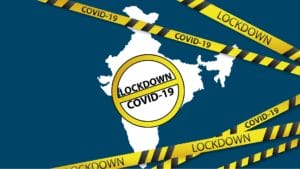 The CEOs of leading inverter and battery industries are predicting a positive rebound of this sector in the post lockdown period. Rough estimates predict that the automotive industry alone could contribute to more than 50% of total revenues. The replacement of worn out and defunct batteries may account for 45% of the revenue.
The CEOs of leading inverter and battery industries are predicting a positive rebound of this sector in the post lockdown period. Rough estimates predict that the automotive industry alone could contribute to more than 50% of total revenues. The replacement of worn out and defunct batteries may account for 45% of the revenue.
Experts believe that the demand for automotive batteries and replacements in the industrial sector will help to sort out the stagnation of the inverter industry.
The other positive aspects are:
Hence, there will be a slow but sure rise from this grim situation for the inverter industry. If your car battery has died down and you need a replacement, Nantech has the right solutions for you. We cater to all industries and domestic demands in the nooks and corners of Chennai and beyond. Waste no time in contacting us by phone - +91 99623 98222 or by email- sales@nantech.in.
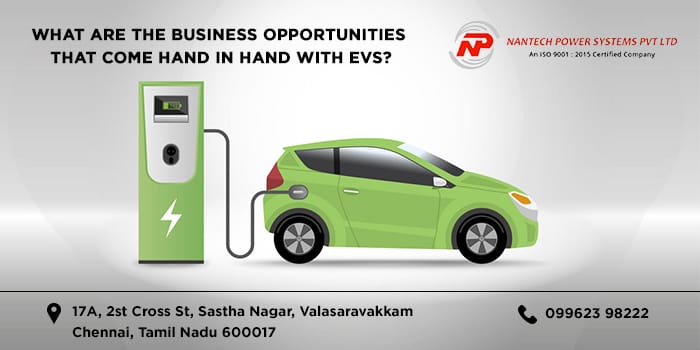
With climate change knocking on our doors, the world is waking up to the need of shifting to vehicles that come with environmental benefits. Electric vehicles are, therefore, the answer. They not only use fewer resources, which lessens our dependency on the planet but also keep the air clean. It is why EVs are expected to dominate the road in the coming years.
With electric cars becoming the norm, it opens up a plethora of business opportunities for you to cash in, especially in automotive hubs like Chennai. One example is the electric vehicle charging solutions in Chennai. There is a world of opportunities that come hand in hand with EVs. Let’s take a look at some of them.
EV charging solutions in Chennai:
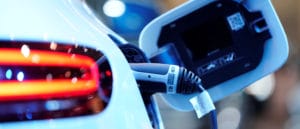
The biggest and most apparent business that one can invest in with EVs is charging stations. Because the battery of an electric car takes a lot of time to charge, it opens up free time for the car owner, which you can leverage upon. Even at the fastest with superchargers in the mix, an EV will take 50 minutes to reach full charge.
It is these 50 minutes you can utilize by offering customers a lounge, café or shop where they have a snack and buy something while they wait for the car to charge. The beauty of setting up an EV charging solution is that not only do you earn from the battery recharge but also from the extra spending customers do to kill time!
Battery Re-utilisation:

Right now, the battery of a two-wheeler is expected to have 1000 charge cycles. This is an estimate for a well-cared lithium-ion battery. It means within two to five years, the owner of the bike or scooter will have to replace the battery.
Given that by 2030, EVs are evaluated to penetrate the global market in tens of millions. In India, there is going to a particular surge in two-wheeler EVs. What does that mean? There is going to be mountains of discarded batteries and here lies the business opportunity.
Most EV batteries, though not fit for vehicular use, are still not completely dead. They can be used in a power bank, which is like a farm where disused batteries are kept to store and house energy for other purposes. These power banks are utilized for applications like propping up the grid of wind or solar farms. Reusing the battery is not the end of the opportunity. EV batteries can also be scrapped to recycle metals such as aluminium, copper, and steel.
Final Mile Link:
There is no doubt electric vehicles come with a host of advantages, but there is one drawback to them. They are not meant for long trips, especially right now when EV charging solutions are too few and far between. The battery of an electric car doesn’t last for extended hours.
The easy solution is to take public transport to your destination city, state or country and for the last mile, you can hire an electric bike or car. Therefore, the business opportunity here is the final mile link. The trick to making a success of this business is to geo-fence the vehicles so that they are not taken beyond a specific range and misused.
Also Read: Evolution In EV Charging Infrastructure
The last business opportunity we discuss in this article that electric vehicles represent is battery swap hubs. While electric vehicle charging solutions are great, there are moments when you don’t have the time to wait for a battery to recharge. A quicker and more efficient method is to stop by a battery charging station, remove your discharged battery and replace it with a fully charged one.

Essentially, you are swapping batteries. There is a massive potential for battery replacement hubs in India because two-wheelers are more popular here. And it is bikes and scooters that come with batteries that can be replaced in a nifty second. All you will need is a station with a permanent stock of fully-charged batteries that you can rent for a given price. A few hurdles you’ll have to cross in this business, like with any other, is to keep battery design in mind. Battery manufacturers don’t use a standardized method, so each two-wheeler will need their specific brand of battery. As long as you keep a stock of all kinds of batteries, you can overcome this challenge.
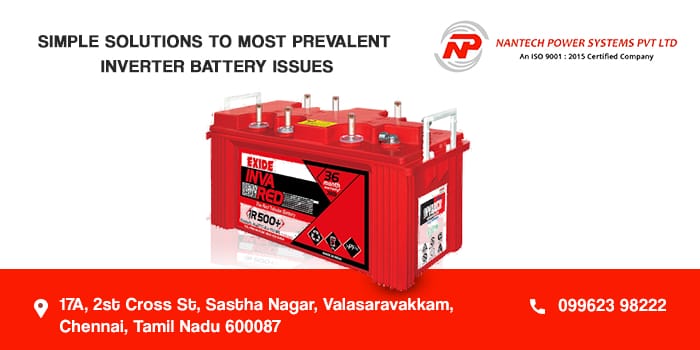
Inverters in Chennai are essential. No home or office can do without them because a single power cut means all the gadgets and appliances; we rely on every day become useless. Inverters provide the power back-up necessary for a continued supply of electricity to them.
But like any other machine, inverters are also prone to common problems. In this article, we explore the solutions to the most common issues that crop up in inverters and batteries.
These are the possible reasons along with remedies why your UPS or inverter is not switching on:
The most common cause of battery not charging is because it is dead. You will have to replace it for the inverter to work. There are three other reasons for it:
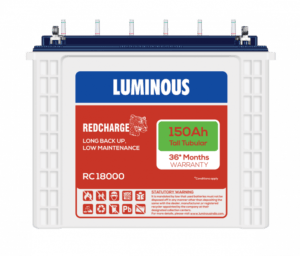
The reasons described in the post above are some of the most common problems that people face with inverters. Thankfully, a majority of them have simple solutions that can be done at home. If that fails, then an inverter repair centre can resolve them quickly.
Also Read: How Useful Is The Inverter?
That said, it should be noted that each issue, like a beeping sound or not charging, may have a different symptom and underlying reason. For instance, if the inverter is making one, constant beeping noise it means capacity overload. Whereas, if the battery beeps in a continuous manner, then the battery is low. Essentially, you have to pinpoint the symptom to get to the issue.
If you are unable to remedy the problem at home, it is highly advised to take the inverter to a supplier in Chennai. They will have experts who can find the issue in a matter of minutes and give you a solution for it!

The humble inverter is the device of choice when it comes to dealing with power outages. Of course, there is a generator. It is bigger, and a more powerful device, but it is not something that suits everyone’s purse.
The application of a power inverter extends well beyond supplying electricity during times of power outage. The lifeline of many electronic devices, the inverter is an intrinsic part of electric cars and bikes, industrial motors, power tools, refrigerator compressors, and computer systems.
Also Read: Inverter Batteries – A Comparative Guide
The omnipresent air conditioner is not on the list, as you can notice. That is what we are here to find out: can your inverter run your air conditioner and save you from the unforgiving heat and power outages during the unbearably hot Indian Summers?
Especially in cities like Chennai where summer temperatures can reach intolerable extremes, this option is nothing short of a blessing.
Before we can “Yes” or “No” to the first question, it is crucial to understand the basic design of the inverter and the way it functions.

An air conditioner used for a 150 square feet room can have a range of 5000 BTUs or British Thermal Unit. An air conditioner this small will utilize about 4 or 5 amps of electricity.
A room that measures beyond 2,500 sq.ft will require an air conditioner with 36,000 BTUs. The amperage for such a powerful air conditioner will be around 15-17 on full power. However, when the unit reaches its set temperature limit, the amperage will be 6 or 7.
Hence, the answer is Yes, the air conditioner can work on an inverter. But there’s a catch. The bigger the capacity of your air conditioner, the bigger the inverter you will need.
Investing in a high-quality inverter battery is not a seasonal investment if you are living in a city like Chennai. With temperatures calling for air conditioners for a good part of the year, it is a wise choice to invest in inverter batteries that will last longer and work to accommodate voltage fluctuations and power surges.
Nantech Power Systems P Ltd is a leading inverter battery dealer in Chennai. It is Top -notch company that specializes in the Sales and Service of Inverter Batteries.
Up and running since 1996, Nantech is an ISO 9000: 2015 Certified Company. Nantech’s robust engineering methods, and manufacturing and customizing services are on par with international standards. It comes as no surprise that Nantech’s prestigious clientele includes a host of well-known industries and households all over Chennai.
Join the coveted list and quit dreading summers in Chennai !!! Dial +91 99623 98222 for more information!